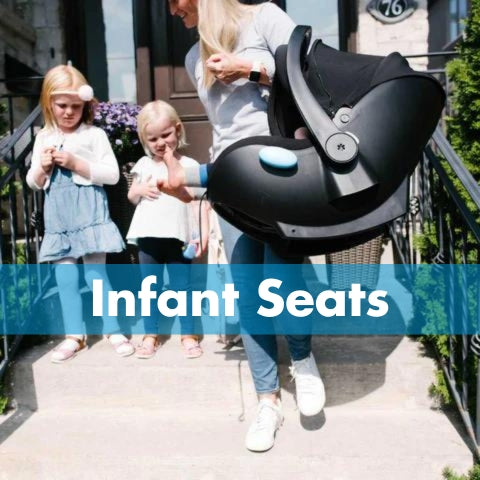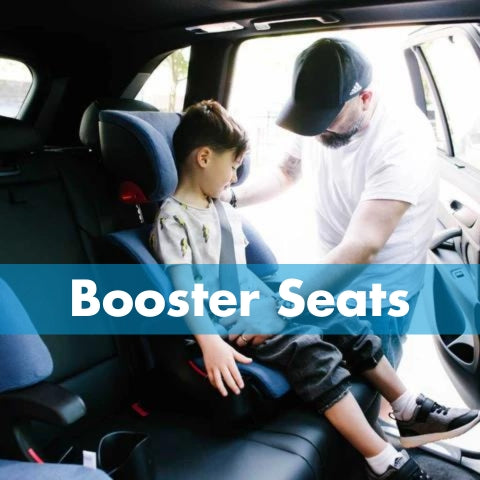Being involved in a vehicle collision is something that no one wants to think about or experience. We hope it will never happen to us. But still, every time we enter a vehicle, we buckle our seat belts, and secure our children in their car seats just in case. These actions are preventative measures that will help to protect us if we are ever involved in a collision. We don’t have the luxury of knowing if or when it will happen to us. That is why it is important that we best prepare ourselves and all occupants for “it” every time we enter a vehicle. Even still, we can take all of the precautions and preventative measures available to us, but sometimes, our fate rests in the hands of another driver, and is completely out of our control. But what is in our control is how we help ourselves and those around us recover.
Before a Collision

The most important role models for a child learning good habits in and around vehicles are their parents. Children are like sponges and absorb the world around them. They mimic behaviors displayed by the adult figures in their lives. That is why it is highly important, not only for our own safety but that of our children, that we as adults always buckle our seat belt before putting the car in drive.
We can’t miss the opportunity to talk about the most common distraction for drivers today…technology. One day, before we’re ready for it, our children will be behind the wheel of their own car. Years of sitting in the back seat with a view of us, the parents, echoing in their brain. What they watched us do for those many years is likely to be repeated by them. So make the safe choice every time you get into the driver seat and put the phone away. Put it in a place where you will not be tempted by a lit screen or the sound of a notification. The safety of those in your vehicle and in the vehicles surrounding you are depending on it.
Proper car seat usage is also very important! Always read the manual that comes with the car seat, following it step by step, to learn how to properly install and use it for your child. Have questions about something you read? Contact the manufacturer for assistance from their customer service department. Clek, for example, ensures that all of their staff are certified Child Passenger Safety Technicians (CPST's) so that they are better able to assist you. If in-person help is needed, visit the Safe Kids website to find a local CPST nearby that can meet with you and assist in teaching you how to ensure your car seat is installed as well as used according to manufacturer instructions. The best protection you can offer your child is a properly used and installed car seat!
After a Collision

You were just involved in a collision. Panic sets in as you look in your rear-view mirror and see your child. Your first instinct is to fly out of your vehicle, rip your child out of their car seat, check to see if they are alright, and give them a hug. As much as we understand that urge, we need to tell you that you shouldn’t. The best place for your child is to remain strapped in their seat. If they did sustain any injuries the car seat will help to keep their body restrained until medical personnel arrive to assess the situation. It isn’t unheard of for paramedics to cut a car seat out of the vehicle and transport a child to the hospital in their seat. The only time it is recommended that you remove your child from the vehicle is if there is smoke or a fire present. Then you will want to get everyone out of there as quickly as possible!
Once the initial shock has worn off and you start to think ahead about whether or not you will need to replace your vehicle, questions also arise about your child’s car seat.
Is it safe to use my car seat after a collision?
First and foremost, check the car seat manual to determine what the manufacturer’s instructions are for after a collision, as they vary. Some require replacement after any collision. Others follow the guidelines set forth by the National Highway Traffic Safety Administration (NHTSA).
When in doubt, reach out to the manufacturer for clarification. If it is determined that the seat needs to be replaced, keep in mind that most insurance companies will reimburse for the new seats. Should you have trouble getting them to do this reach out to the car seat manufacturer, as they often will be able to assist you in proving to the insurance company that the seat requires replacement.
For Clek car seats:
As is listed in the owner's manual, Clek always recommend discontinuing the use of and replacing a seat involved in a crash of ANY KIND, due to the fact that it may cause damage to the seat you cannot see.
If need be, please contact Customer Support at 1-866-656-2462 or customerservice@clekinc.com to obtain a document on company letterhead that outlines our accident replacement policy for insurance purposes.
What if my child wasn’t in the vehicle during the collision?
Even if your child was not in the vehicle occupying their car seat during the collision the car seat itself still experienced the forces of the crash. In this case you would still follow the manufacturer’s instructions regarding collisions.
Recovering From a Collision

Recovering from a collision can be both a physical and mental process that can last days, weeks, months, or sometimes years.
Dr. Bessel Vander Kolk, a Boston-based psychiatrist and author of the well-known book The Body Keeps the Score, has been researching post-traumatic stress since the 1970s. Part of his work on trauma has centered around the ways in which traumatic experiences actually alter the neurochemistry of the brain, changing the ways in which it functions. He states that trauma is “when the past colonizes the present”, obstructing our ability to learn from experience and imagine alternative futures for ourselves and others.
Understanding Trauma
Trauma essentially puts us in an ongoing state of stress, long after it should have subsided. It’s easy to see how children are even more affected by this than adults. At a crucial stage of life when children are rapidly growing, learning and changing, having those neurochemical processes interrupted by a traumatic event like a vehicle collision can have lasting effects.
If you have children who have been in a collision, it’s important to watch for signs of trauma and to understand when to seek help, if needed. Everyone processes trauma differently. Two children who have been in the same collision might handle it in different ways and you may notice signs of trauma in one child, but not in the other. This is perfectly normal, and is indicative of the ways in which all children (and all humans in general) are unique in our outlook and coping mechanisms.
It’s also important to acknowledge your own emotions. It can be easy to fall into the trap of self-blame, thinking that there could have been something more you could have done to keep your child safe, when in reality, you did and are doing the best you can. Those thoughts are normal, but it’s important to not get crippled by them, which is where counseling can be beneficial for both yourself and your family.
Dealing with Trauma
Fortunately, there are some things you can do to help your child process what they went through, and deal with the leftover emotions of their traumatic experience. Children thrive on routine, so it’s important to instill a sense of predictability by getting back to a normal routine as soon as possible. Children are comforted by spending time with loved ones, and giving them an opportunity to talk to a trusted adult or caregiver is extremely important.
Be alert to those times when your child is most willing to engage—such as during a car ride, or at bedtime when you’re tucking them in—and use them as an opportunity to check in and encourage dialogue about their experience and what they’re thinking and feeling.
Never pressure or force them to talk about it…it’s best to provide the opportunity and let them come to you.
Use play to help your child role play the scenarios they’re struggling with. You can have their dolls and stuffed animals play the role of either the child or the parent, which is mutually beneficial because it can help you both work through any lingering feelings of regret, guilt, fear, or anger. You can also communicate through storytelling and pretending, both ways in which children naturally process their day-to-day realities.
The Importance of Storytelling
This approach is especially true for younger children and worked well for Melissa, whose son was in a serious collision at the age of three. She told us that it took him about six months to really turn a corner in his recovery, and pointed out that adults often don’t realize how much easier it is for us to cope with traumatic events than it is for children: “It’s easier for us to understand that the person didn’t mean to hurt you, that they made a mistake and people got hurt,” she explained.
At the advice of her family’s counsellor, Melissa used storytelling and role play to help her son work through his fears and memories of the collision. When we asked her if she had any advice for parents about how they can help their own children recover, her answer: “we allowed him to talk about it as much as he needed to, over and over again, even if it drove us nuts,” she said, laughing a bit.
“Don’t expect them to process it quickly and don’t be shy about sharing how you feel with them, either. Allow them to talk about it as much as they need to. Recovery is a lengthy process and children learn through repetition. Storytelling is something you do over and over, not just once. Let the child direct, let them take the lead.”
Feeling a Sense of Control
Letting your child take the lead during their recovery process is important because it gives them a sense of control during a time of chaos in their life. Feeling like they’re in control of certain things can speed up their recovery process and allow them to take ownership of their own safety. Dr. Alisa Baer, Pediatrician and Child Passenger Safety Instructor who runs the acclaimed website The Car Seat Lady, suggests having a conversation with the child about how they can help you keep them safe (sitting still in their booster, not playing with their harness, etc.) which will also give them a sense of control over their own wellbeing.
It’s also a good idea to talk to your child about their car seat, and explain what it does and how it keeps them safe. Melissa’s son was in a second collision just last year, this time with his eight-month-old brother in the car seat next to him. This time it was just a fender-bender, but her son attempted to calm his baby brother, telling him he would be okay because he was in his car seat, and his car seat was designed to keep him safe. She related that her eldest son had recovered very quickly and seemed to process what had happened much better than the first time. He had made the connection between his car seat and his safety, and attempted to communicate that to his brother.
To help instill that sense of control, you can use elements of role-playing too. “Have the child practice buckling themselves or a doll/stuffed animal in [to their car seat] so they can feel like they’re also in charge of keeping something safe,” advised Alisa. “It will establish good safety habits that will grow with them.” Alisa also suggests letting your child participate in purchasing a new seat by choosing the color.
At the end of the day, regardless of whether or not the body was severely injured, emotional healing is often a more complex and lengthy process than physical healing. Physical injuries are often visible to the naked eye and relatively easy to understand. Emotional injuries can be hidden, multi-faceted, and often closely intertwined with other aspects of the mind that are hard to see or access. This is even more complex in children, whose communication and comprehension skills are not yet well-developed.
Dr. Vander Kolk’s methods for healing trauma all center around bringing the mind and body into the present. All of these activities—storytelling, role play, talking, active listening and regaining a sense of control—are essentially doing just that. They’re helping to ground you and your child in the present moment, and helping the scariness and unpredictability of the collision retreat further and further into the past.




